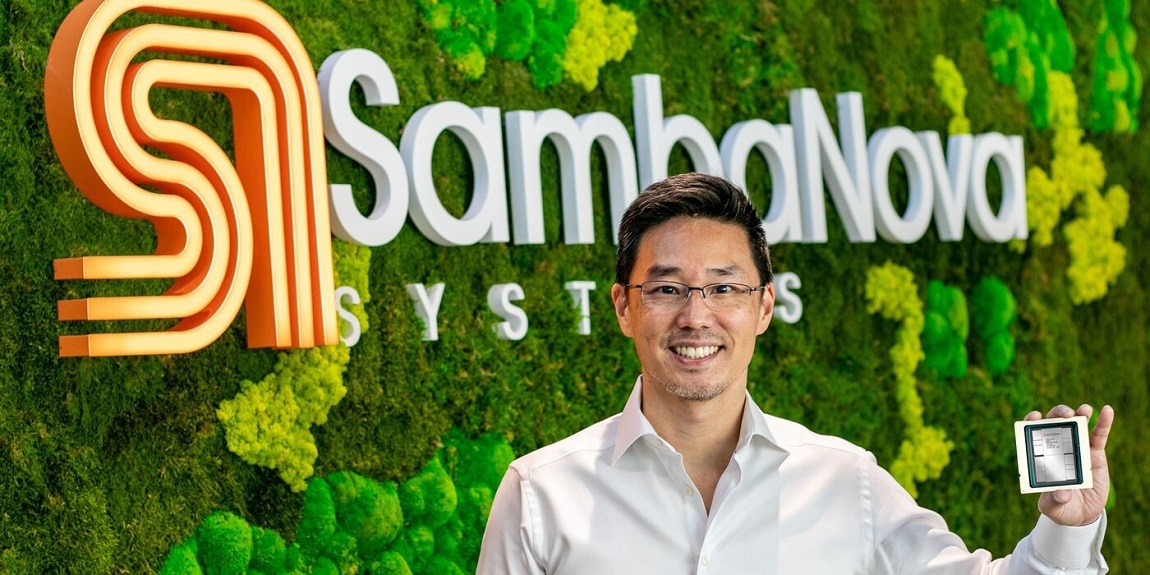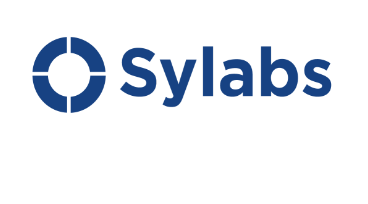We offer these predictions across a range of developments, trends and challenges facing the HPC-AI industry in 2024. Some take on the entrepreneurial spirit of business consultant Peter Drucker and his famous call-to-arms: “The best way to predict the future is to create it.” Then there’s Chinese philosopher Lao Tzu, who cautioned: “Those who have knowledge, don’t predict. Those who predict, don’t have knowledge.” But we think Lao Tzu was being unfair. Humans are compelled to extrapolate, anticipate and predict. It’s in our nature. And HPC-AI strategists, situated as they are at the tip of the technology spear, constantly forge into uncharted territory. Making prognostications and acting on them is what they do. So with that….
GenAI Stays Hot, with Conflicts

From Deloitte Global’s “TMT Predictions 2024” report, the company predicts enterprise spending on generative AI will grow by 30 percent this year. But on the software side, “…expect competition between vendors who want to charge per user and IT departments that believe generative AI features should be free. Deloitte predicts a $10 billion uplift in 2024. “
On the generative AI chip side, Deloitte “predicts the market will be valued at over $50 billion in 2024, and together with other AI-enabling chips could represent half the value of all semiconductors sold by 2027.”
Control of genAI will be a key issue. “More companies seeking to avoid the risk of models trained on public data are expected to train generative AI on their own data to enhance productivity, optimize costs, and unlock complex insights.”
Deloitte also predicts the “European Union is expected to set the stage for global regulation of generative AI, influencing its own markets and serving as a template for other regions.”

AI Gets Individualized
Accenture’s 2024 Technology Vision report, “Human by Design: How AI Unleashes the Next Level of Human Potential,” offers interesting thoughts on where AI is going. Here are their thoughts on “AI agents,” which makes us think of a previous age when servants were commonplace.
“Ecosystems for AI – envisioning a world where AI-empowered agents work on behalf of individuals and are part of an interconnected ecosystem. These automated agents not only assist and advise us, but also take decisive actions on our behalf in both the physical and digital worlds. Working together, they multiply the collective output of workers and generate immense value for enterprises that choose to participate. Ninety-six percent of executives agree that leveraging AI agent ecosystems will be a significant opportunity for their organization in the next three years.”
How to Reduce GenAI Nonsense

Kari Briski
NVIDIA Vice President of AI Software Kari Briski urges us to “Expect to hear a lot more about retrieval-augmented generation as enterprises embrace these AI frameworks in 2024.
“As companies train LLMs to build generative AI applications and services, RAG is widely seen as an answer to the inaccuracies or nonsensical replies that sometimes occur when the models don’t have access to enough accurate, relevant information for a given use case,” she said. “Using semantic retrieval, enterprises will take open-source foundation models, ingest their own data so that a user query can retrieve the relevant data from the index and then pass it to the model at run time. The upshot is that enterprises can use fewer resources to achieve more accurate generative AI applications ….”
AI Cautionary Note
SambaNova CEO Rodrigo Liang sees a mixed, post-hype picture for the AI industry in 2024.

Rodrigo Liang
“After the boom, there will be an extinction for many AI companies as a direct result of enhanced scrutiny around data privacy, security and safety,” he says. “As such, 2024 will be the year of the secure, safe harbor AI company, and the explosion in AI investment and innovation will both consolidate and accelerate. Winners will begin to emerge in all fields.”
At the same, “AI will go mainstream, no longer serving as a supportive tool for experimental production, but a vital, strategic business asset. It will operate at warp speed and drive major business decisions by the end of 2024.”
And Liang says the way AI is computed will come under increasing scrutiny.
“AI models and chips that offer increased compute power while simultaneously reducing energy consumption and lowering total cost of ownership will trend. In other words, ESG (environmental, social and governance) will quickly become the new North Star.
Managing Data and More Data
Jason Lohrey, CEO of Arcitecta, the Australian big data management company, had these interesting thoughts on data management in the age of AI.

Jason Lohrey
“AI will move deeper into the data path…,” Lohrey said. “Embedding AI and large language models directly into the data fabric will allow organizations and people to identify patterns and exploit the value in their data on a greater scale and much more quickly than before.
“Data management will be delivered as a managed service,” Lohrey continued. “As data environments reach hundreds of petabytes and hundreds of billions of files, managing data will become an increasingly difficult and complex challenge. Organizations are starting to realize they don’t have the expertise to effectively manage their data at scale. As a result, we’ll see more data management offered as a managed service, removing the burden from companies….”
DevOps for Hyper-Heterogenous AI
High performance container company Sylabs predicts that with the rapid evolution of AI and machine learning, performance portability will be crucial for DevOps teams. The main driver is maintaining application efficiency across diverse hardware, particularly as workloads extend from cloud to edge and HPC environments. This strategic imperative becomes pivotal as DevOps teams navigate the rise of specialized AI hardware, further complicating this landscape for DevOps managers.
 “By harmonizing the power and precision of HPC with the agility and automation of DevOps practices,” said Keith Cunningham, VP of Strategy at Sylabs, “developers can facilitate a more seamless, efficient, and innovative development process, crucial for adapting to the rapidly evolving technological landscape.”
“By harmonizing the power and precision of HPC with the agility and automation of DevOps practices,” said Keith Cunningham, VP of Strategy at Sylabs, “developers can facilitate a more seamless, efficient, and innovative development process, crucial for adapting to the rapidly evolving technological landscape.”
Sylabs added this prediction: “Looking ahead to 2024, a significant milestone is expected with the integration of generative AI by AIOps software vendors. This … is poised to accelerate its adoption and introduce more sophisticated and responsive operational capabilities….”
A Shift in Vendor and Systems Assessment
 HPC-AI systems integrator consulting firm Alces Flight, under a missive entitled “Long Live Supercomputing,” sees a shift in how IT strategists are assessing advanced systems.
HPC-AI systems integrator consulting firm Alces Flight, under a missive entitled “Long Live Supercomputing,” sees a shift in how IT strategists are assessing advanced systems.
“This year marked a distinctive shift away from focusing on the next release of hardware and software and more towards how systems are planned and executed at scale,” the company said. “Brought on in part by exascale and the growing demand for AI/ML processing, large-scale systems planning requires greater collaboration and partnerships over solo, bespoke endeavours. This means that everything from power and housing, to how hardware and software is built and managed, to who is utilising the system, is being looked at in more depth and detail.”

Mike Bernhardt
Similarly, Mike Bernhardt, CEO of strategic communications advisory group Team Libra, also predicts a change in how technology companies position and present themselves.
“HPC and AI vendors will start to shift marketing and communications strategies and priorities from technical bragging rights to influencer and market relations—with an emphasis on building and sustaining relationships.”
This change, he says, could have significant results.
“Watch for fluctuation in existing HPC market share as some vendors get better at helping prospects and customers connect the dots between HPC and AI – i.e., we’ll see customers switching HPC vendors.”
Quantum Supremacy – At Last?
D-Wave President/CEO Alan Baratz flatly predicts that the quantum industry “…industry will achieve a proven, defensible quantum supremacy result in 2024. Ongoing scientific and technical advancements indicate that we are far along the path to achieving quantum supremacy. 2024 will be the year where quantum definitively outperforms classical, full stop.”
OK Alan, here’s hoping the industry proves the quantum skeptics wrong.
Baratz also predicts that the “US government’s usage of annealing quantum computing will increase given the anticipated passing of legislation including the National Quantum Initiative and the National Defense Authorization Act. 2024 will see a rapid uptick in quantum sandbox and test bed programs — with directives to use all types of quantum technology, including annealing, hybrid and gate model.”

Alan Baratz
As for the global race to quantum leadership, Baratz says it will “continue to heat up… While the U.S. is now starting to accelerate near-term applications, other governments like Australia, Japan, the U.K., and the E.U. have been making expedited moves to bring quantum in to solve public sector challenges. This effort will greatly expand in 2024. Top public sector areas of focus will likely be sustainability, transportation and logistics, supply chain, and health care.”
Quantum adoption is increasing, Baratz said, “…companies are beginning to go into production with quantum-hybrid applications, so it’s no stretch of the imagination to see corporations using quantum solutions daily for ubiquitous business challenges such as employee scheduling, vehicle routing, and supply chain optimization.”
Returning to the issue of achieving quantum superiority, what that means is open to question.
“Quantum advantage, the elusive goal of quantum computing, has been claimed by several companies and researchers in 2023 but these claims are based on very narrow and artificial problems that have no practical relevance or value,” cautioned Ilyas Khan, founder and chief product officer, Quantinuum. “What we really need is practical quantum advantage, which means solving problems that matter for science, industry, and society, using quantum devices that are feasible and affordable in terms of size, weight, power consumption, and cost.”
 Beyond Qubits?
Beyond Qubits?
“In 2024, I think we’ll see a shift away from the focus on the qubit race and a broader perspective on the ability of quantum computing to expand the capabilities of other technologies,” says Markus Pflitsch, CEO and founder, Terra Quantum. “In the next 12 months, quantum hardware companies will achieve even closer integrations between classical and quantum hardware and software to achieve the highest performance from each technology. It will also be increasingly clear that quantum computing is the gateway towards artificial general intelligence based on quantum mechanics’ non-local, non-causal, and non-deterministic nature.”
On the Other Hand: All-Optical Computing
 Another futuristic form of computing, “all optical,” got a validating boost this year, according to quantum skeptic Chene Tradonsky, CTO and co-Founder of LightSolver.
Another futuristic form of computing, “all optical,” got a validating boost this year, according to quantum skeptic Chene Tradonsky, CTO and co-Founder of LightSolver.
“Despite its initial promise, quantum computing has yet to fully materialize as a viable option for businesses to tackle the most pressing business and scientific challenges,” Tradonsky said. “…we find immense potential in a new way of computing, leveraging lasers. Microsoft’s Project AIM announcement this year about an all-optical computer underscores a growing recognition of this paradigm shift. We firmly believe that laser-based solutions will emerge as promising and viable infrastructure options in the realm of (HPC), proving to be the most scalable, reliable and affordable option for the enterprise, and will provide groundbreaking solutions to the world’s most complex problems.”
And This, Sounding the HPC-AI Energy Consumption Alarm
 “As new uses of AI continue to open up, AI compute hardware demand will further outstrip supply,” says Phil Burr, Head of Product at UK-based optical computing company Lumai. “This will exacerbate in 2024/25, with the increased use of visual media as an input for generative AI – including images and video… As the amount of AI computing grows, data center operators will face pressure to increase AI energy efficiency. Worryingly, the current prediction of the power required to service AI workload is forecast to be 20GW by 2028.”
“As new uses of AI continue to open up, AI compute hardware demand will further outstrip supply,” says Phil Burr, Head of Product at UK-based optical computing company Lumai. “This will exacerbate in 2024/25, with the increased use of visual media as an input for generative AI – including images and video… As the amount of AI computing grows, data center operators will face pressure to increase AI energy efficiency. Worryingly, the current prediction of the power required to service AI workload is forecast to be 20GW by 2028.”
On the Power Front

Rosemary Francis
Altair Chief Scientist Rosemary Francis says power-aware scheduling will emerge as key demand. “
“Users have been asking for better power controls, but it will come to a head in 2024, requiring an industry shift to embed better power measurements at the hardware level and provide support to expose those metrics in the infrastructure layers,” she said. “This will enable customers to orchestrate their workloads in terms of the power budget, something climate-conscious organizations are keen to do.”




